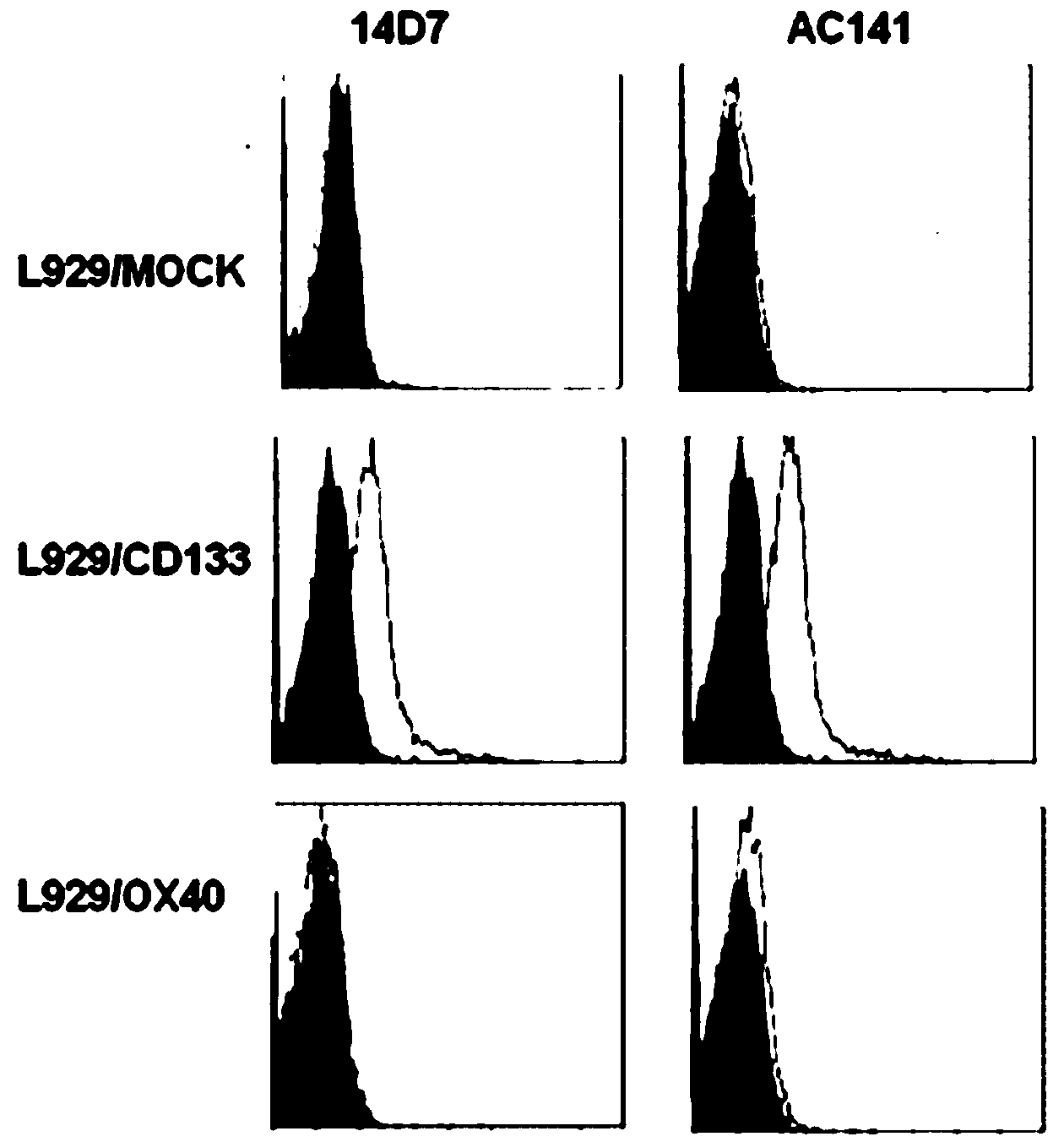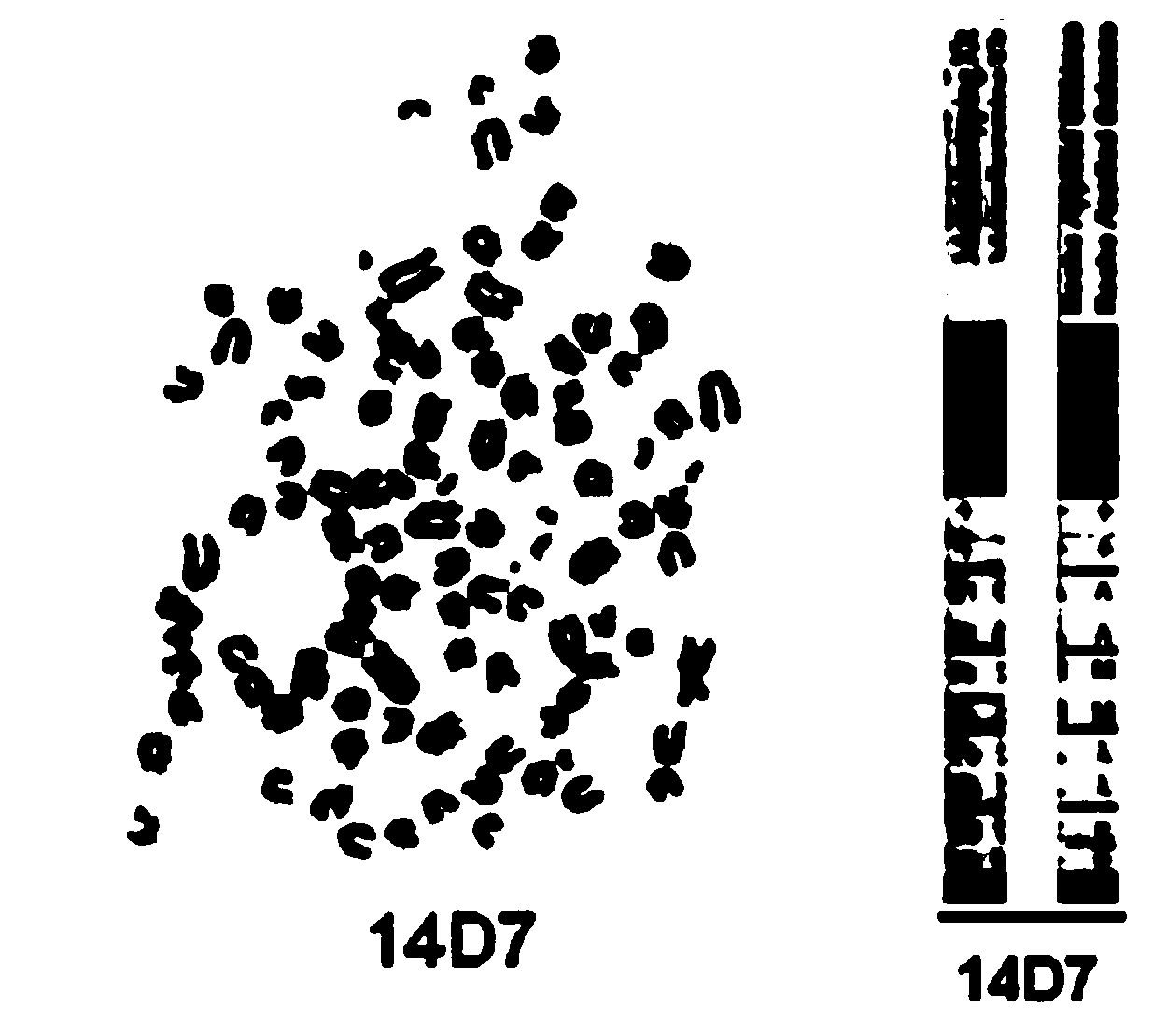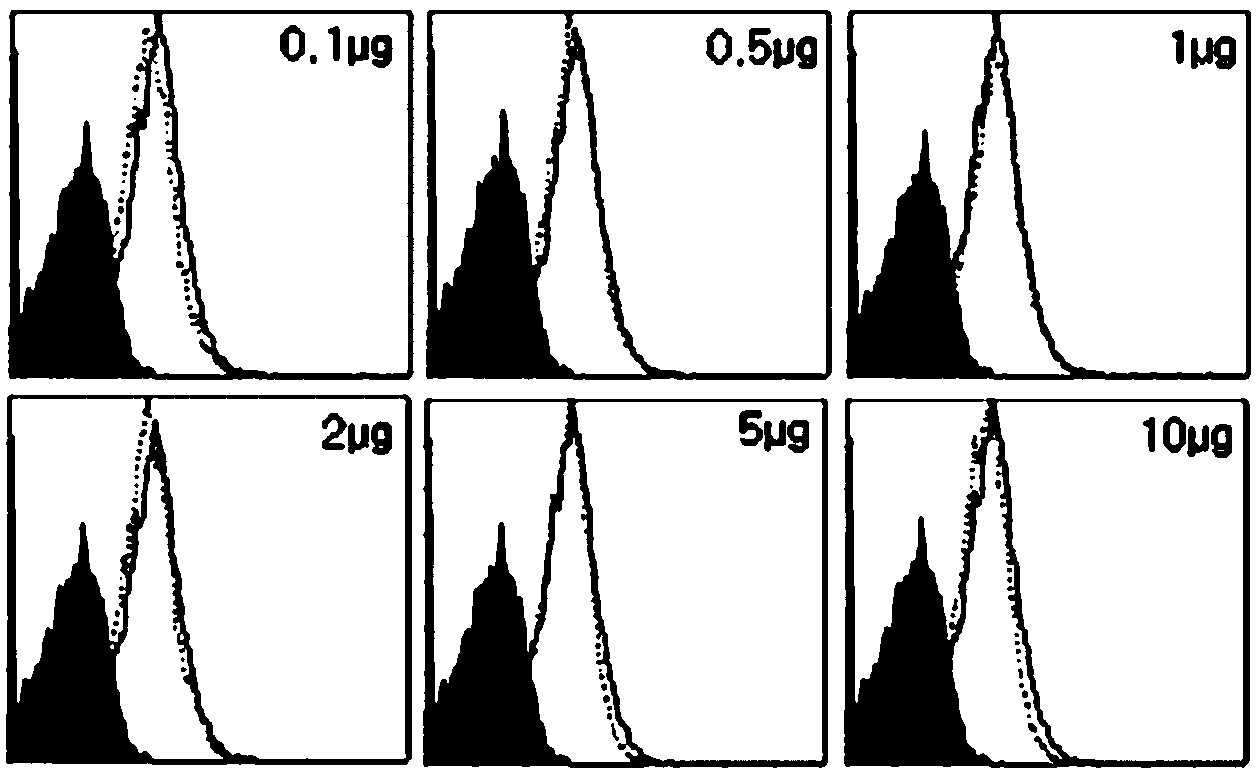Anti-human CD133 monoclonal antibody and preparation method and applications thereof
A monoclonal antibody, hybridoma cell line technology, applied in the direction of antibodies, biochemical equipment and methods, anti-animal/human immunoglobulin, etc., can solve problems such as affecting the expression level of CD133
- Summary
- Abstract
- Description
- Claims
- Application Information
AI Technical Summary
Problems solved by technology
Method used
Image
Examples
Embodiment 1
[0039] Embodiment one : Preparation of anti-human CD133 monoclonal antibody
[0040] This example describes the preparation of the anti-human CD133 monoclonal antibody 14D7 of the present invention.
[0041] (1) Establishment of transgenic cells L929 / CD133 and L929 / mock
[0042] (a) Cloning of human CD133 gene:
[0043] Using AC133-2 as a template, two pairs of primers (Table 1) were used for segmented PCR amplification. The reaction conditions were denaturation at 94°C for 60 s, annealing at 58°C for 60 s, and extension at 72°C for 1-3 min. After a total of 35 cycles, Then extended at 72°C for 10 min to obtain two fragments, A and B. After the PCR product was purified by the kit, 133A (SEQ ID NO:1) and 133B (SEQ ID NO:4) were used as primers, and the reaction conditions were denaturation at 94°C for 60s, annealing at 58°C for 60s, and extension at 72°C for 3 min15s, a total of 33 After three cycles, it was extended at 72°C for 10 min to obtain the full-length CD133-1 g...
Embodiment 2
[0062] Example 2: In vitro biological effects of monoclonal antibody 14D7 on SHI-1 cells
[0063] 1) Inhibitory effect of monoclonal antibody 14D7 on the proliferation of SHI-1 cells in vitro: SHI-1 cells were treated with anti-CD133 monoclonal antibody 14D7 at different concentrations of 0.5 μg / ml and 5 μg / ml according to the above method. Inhibit the proliferation of SHI-1 cells within a certain range (compared with mouse IgG group respectively, p Figure 9 ).
[0064] The above experimental results showed that monoclonal antibody 14D7 inhibited the proliferation of SHI-1 cells.
[0065] 2) Monoclonal antibody 14D7 blocks the cycle of SHI-1 cells: This experiment analyzed the cycle distribution of SHI-1 cells under the action of 14D7. The result is as Figure 10 Shown: In the mouse IgG control group, 56% of the cultured cells are in the S phase, and about 40% of the cells are in the G1 / G2 phase, indicating that most cells are in active DNA synthesis and cell division phase....
PUM
 Login to View More
Login to View More Abstract
Description
Claims
Application Information
 Login to View More
Login to View More - R&D
- Intellectual Property
- Life Sciences
- Materials
- Tech Scout
- Unparalleled Data Quality
- Higher Quality Content
- 60% Fewer Hallucinations
Browse by: Latest US Patents, China's latest patents, Technical Efficacy Thesaurus, Application Domain, Technology Topic, Popular Technical Reports.
© 2025 PatSnap. All rights reserved.Legal|Privacy policy|Modern Slavery Act Transparency Statement|Sitemap|About US| Contact US: help@patsnap.com



